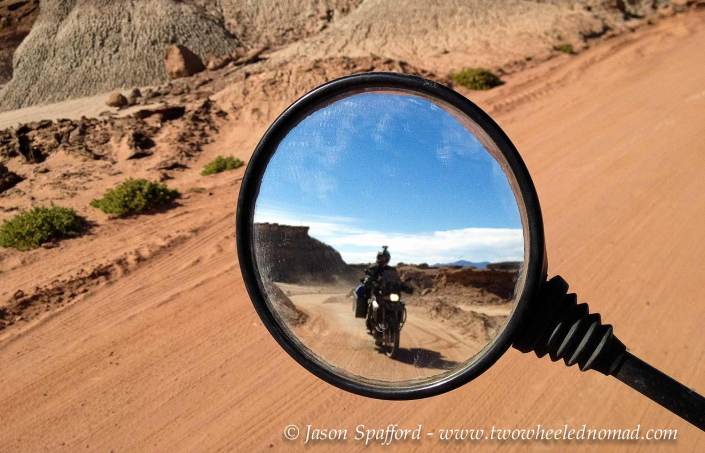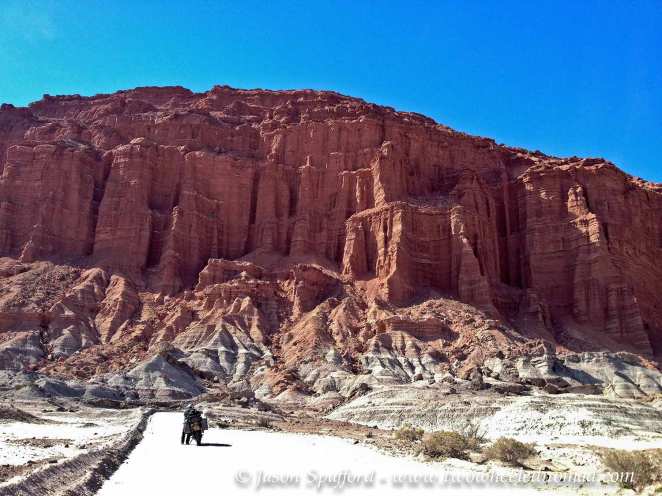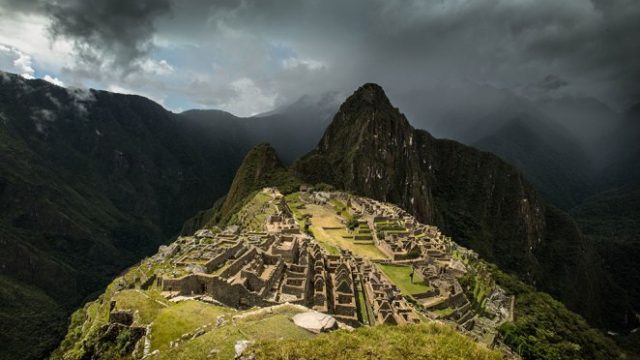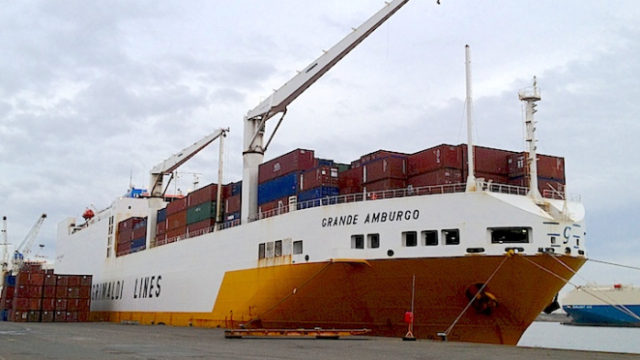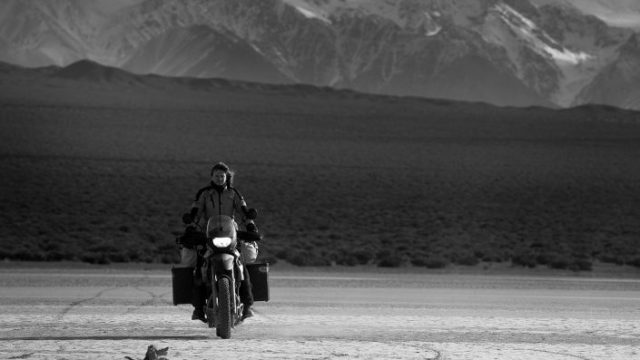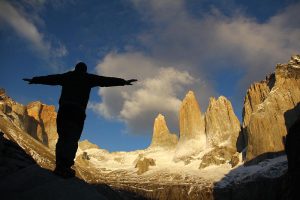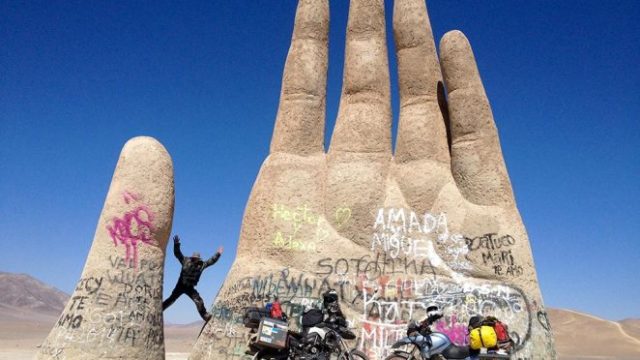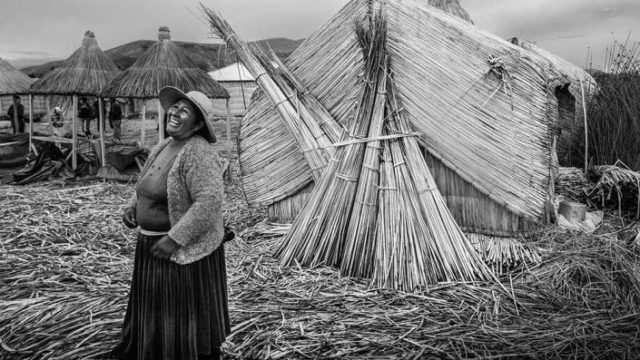Barreal’s playground on the crazy paving dried mud lake had been a hoot. We continued on ruta 149 but de toured eastwards for a pit stop in San Juan; Jason’s bike was screaming out for sprockets and a new chain. He was carrying a set from Santiago; it was just a case of replacing old for new. Jumping back on the 149 with a carefree spirit for the life unconventional, I sharply sucked a breath of air in as a four by four driver – evidently harbouring a death wish for himself and those jinxed mortals around him – made a kamikaze swerve around me, overtaking seconds before the brow of a hill.
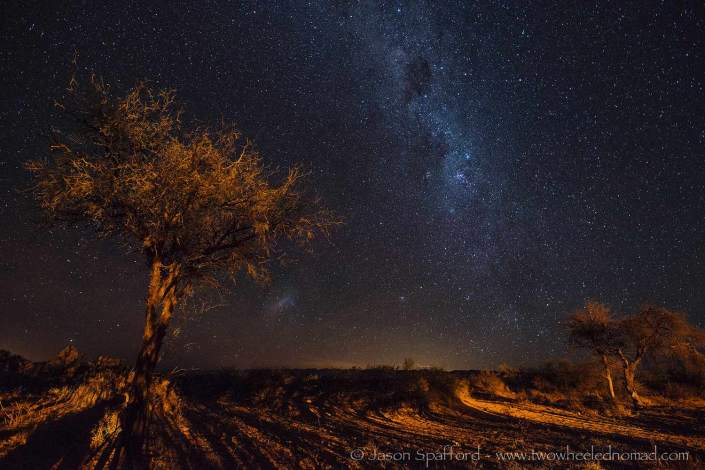
The oncoming car charging over the crest of the hill abruptly veered off road into the dirt to avoid collision, while I slammed both brakes on and did the same. All three of us had missed one another by a hair’s breadth. I felt nauseated by this idiot’s recklessness. The near miss threw me firmly out of the carefree camp and into a pensive one. Although I’d encountered worse drivers and had yet to come across a lot worse, spending another one of my nine cat lives was not to be shrugged off lightly.
On a side note about carnivorous mammals – riding over 8,500 miles in South America I’d so far: seen not one cat corpse but countless dead canines by the roadside, espied cadaverous looking dogs of whom are ubiquitous in Argentina and discerned if you stand still holding a sandwich for long enough, a mongrel with starvation swimming in his eyes will be peering up at you. To my mind, the absence of ameliorating the welfare standards of wild and stray dogs was one of the few things that besmirched Argentina.
I made amends with my morning’s narrow escape and my mood lightly lifted as the day wore on. Far off in the distance, sunlight shimmered off sapphire blue water. We stopped three kilometres outside Rodeo to have a look and kicked the side-stands down at Dique Cuesta del Viento, a perfect place to make peace with the world again. Shame there weren’t any kitesurfers taking to the wind or windsurfers whizzing past on this world famous reservoir, if naught else it was still beguiling as artificial lakes go.
Rodeo was a quiet sleepy town; folks sauntered along the street, while others strolled with an unhurried leisurely air. Unfortunately, the town didn’t take its name on lasso-swinging cowboys buckarooing their broncos but there were gauchos’ horses – belonging to Argentinian nomadic cowboys’, placidly grazing nearby. As I rode further, I peeked at picturesque adobe houses made from a kind of clay, many intermingled with small shack like shops advertising their wares or local fare on makeshift signs. The empanadas – a pastry crescent shaped parcel of hot minced: beef, onion, egg and olives – were full of flavour, fresh from the oven and cost pennies.

We chanced upon a hostel 50 Nudos off the village’s happily trodden track, which was as rustic and restful as it was idyllically remote. Even the big and little resident dogs scampered up to me without boisterously barking their chops off. The auburn haired, floppy eared sausage dog won my vote and I don’t ordinarily seek pooches out. With imploring eyes, I bartered an affordable rate with the hostel owner and thanked him with all the gratitude I had. Our budget wasn’t an infinite resource by any stretch and credit to this kind man, he needed his pricey rooms occupying in low season as much as we yearned a comfy bed.
Back on the renowned ruta 40, we’d ridden an inverted ‘V’ from Rodeo and had travelled north for half a day only to veer south again on the 76. Shrine filled caverns honeycombed the hills, as they so frequently did. Legend has it that during the civil wars of the 1840s Deolinda Correa followed her husband’s battalion on foot through the desert carrying provisions and her baby. Her supplies ran dry, she passed away from extreme hunger, thirst and exhaustion. When muleteers found them, the baby was reported to be suckling at the dead woman’s breast.
Commemorating the miracle of the baby’s survival, shrines referred to as Difunta Correa (meaning ‘defunct’ and her surname respectively), symbolise her soul, one that performs miracles and intercedes for people. Devotees, particularly truckers leave gifts such as bottles of water to quench Deolinda’s thirst at said roadside shrines in exchange for supernatural favours, and this happens from Ushuaia all the way to La Quiaca on the Bolivian border.
The sienna coloured mountains and wild-west forked cacti poking up amid rusty red rock within Parque Nacional Talampaya made the long straight stint through the desert down to Los Baldecitas worth the wait. The lady of a fully occupied hospedaje – homestay directed us to a nearby shabby clay house situated on a sandy floor. At a fiver per person (in British pounds), we had everything and more we needed: a roof over our heads, an open fire and a Bobby Dazzler view of the desert with flocks of green parrots flying overhead.
The day had been a chilly one, we had set off in sub-zero temperatures only for a clear starry night to follow suit. When I tucked Pearl in for the night, pain shot up my legs as my half-frozen feet began to thaw in the warmth. I curled up around the fire with a wind-scoured face and a good book. Relaxed and subdued, I let my eyes devour the fire while the flames licked at my bread. Paperback in one hand and toast in the other, the blaze was all acrackle – flickering light dancing across the planes of our faces. More wood enlivened the fire, as fiery dancers woke within each stick of wood to whirl and spin in their glowing gowns of yellow and orange. I was done for another day.

A fresh 17 kilometre ride blasted out the cobwebs, as well as the sleep from our eyes and took us to Valle de la Luna. Valley of the moon is a 630 square kilometre UNESCO park, a desert valley that sits between mountain ranges Cerros Colorados in the east and Cerro Los Rastros in the west. It takes its name from the Diaguita word for ‘land without life’. We rode into a sandy scene of cacti and rock formations steeped in rich mineral layers: creamy white calcium, pistachio green copper, bile yellow sulphur and terracotta-tinged iron, which looked super-imposed against a cloudless blue sky. All that was missing for a spaghetti western movie set was the prairie-grazing cattle, fast flowing rivers and horse-mounted cowboys.
During a 40 kilometre paid tour on the bikes following a procession of cars, we listened intently to how complete specimens of dinosaur skeletons had been found from the Triassic period, preserved so perfectly inside the layered sedimentary rock infused with its safeguarding substances. Fortunately, our tour guide Florencia was relaxed and allowed us to hang back, disappearing from view more oft than not and foremost the throng of tourists.
 Over millennia at every meander in the canyon, the waters of the dry River Ischigualasto had carved shapes in the malleable red sandstone, monochrome clay and volcanic ash. I didn’t think much to the ‘submarine’ or ‘worm’ but rather liked the ‘Sphinx’ with an uncanny resemblance to a lion’s body wearing a woman’s head. It was an incredibly raw remnant of the Mesozoic Era, representing an ancient segment of our evolution. Riding around the place on motorcycles was a fittingly first rate way to see the place.
Over millennia at every meander in the canyon, the waters of the dry River Ischigualasto had carved shapes in the malleable red sandstone, monochrome clay and volcanic ash. I didn’t think much to the ‘submarine’ or ‘worm’ but rather liked the ‘Sphinx’ with an uncanny resemblance to a lion’s body wearing a woman’s head. It was an incredibly raw remnant of the Mesozoic Era, representing an ancient segment of our evolution. Riding around the place on motorcycles was a fittingly first rate way to see the place.

Around and up one stony hill, our eyes settled on a octet playing traditional Argentinian music with a variety of string and wind instruments. Two professional dancers were also ballrooming to the tango. Their intense eye contact with one another, fixed postures and abrupt pauses made quite the surreal scene against a backdrop of rocky desert. I smiled as I sipped on a drop of complimentary Malbec enjoying the ambience – at that point I succumbed; ditched my helmet and donned the ‘tourist hat’. I imagined having the place to ourselves at night under a full moon would be equally as impressive – roaming on a moonscape of grey dunes in twilight. Eerie but enchanting…
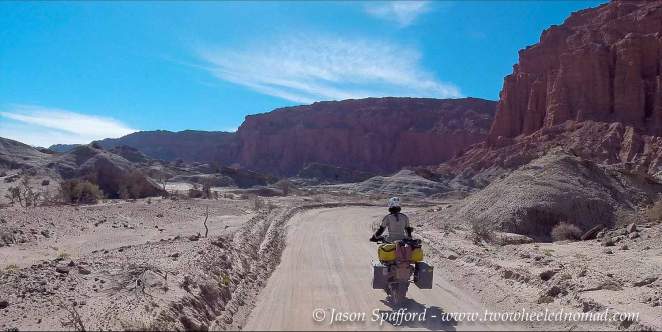
A delicious languor was stealing over me while time stole away from us – by the time we’d slowly meandered over sand – me partly careening and Jason gliding – back to the park entrance, it made sense to return to our desert hideaway. The thought of another open fire and hot toast laced in Dulce de leche was too good to deny. Dulce de leche is a thick, toffee coloured milk caramel spread, which unlike dark green vegetables, can be found anywhere in Argentina. It’s so sweet that it will all but dissolve your tooth enamel upon contact. I was becoming dangerously addicted to the stuff. Wood laid and lit, the first flames appeared shy as a lamb, darting and dashing from tinder to log. Moments later, fire once again engulfed the hearth and us in a radiant heat. It was a bliss that blazed for hours, reaping from life’s elemental but nourishing charms.


